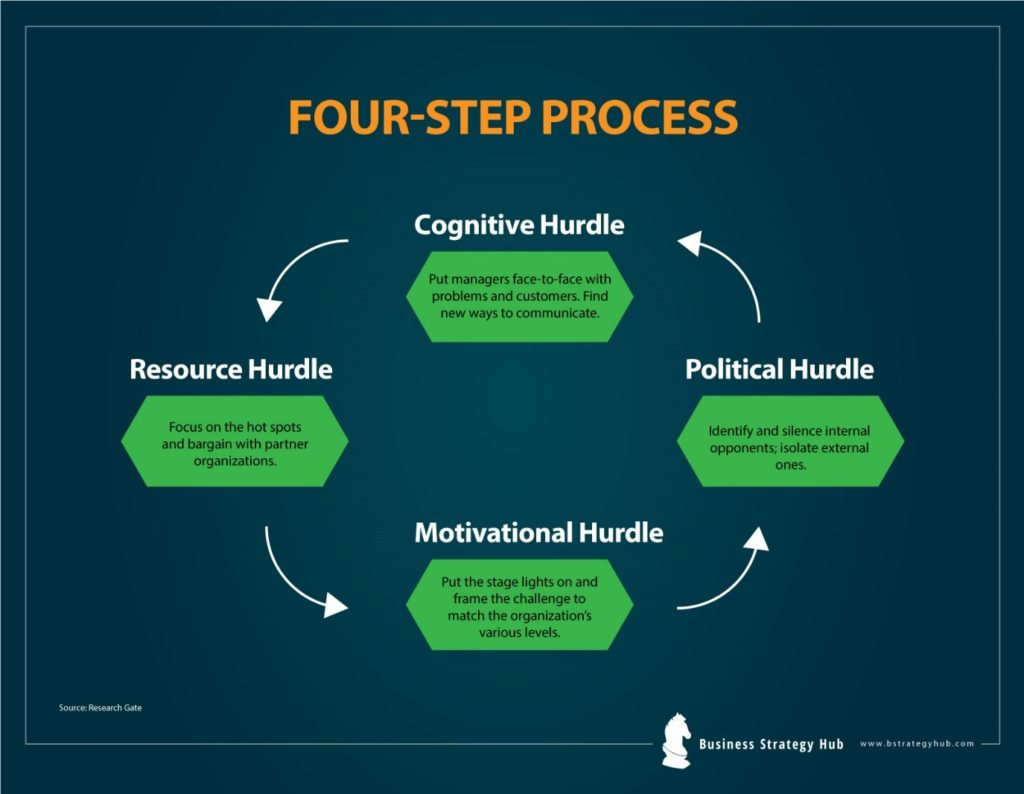Model Name : Tipping Point Leadership
Author: William Bratton
Year : 2000
Purpose : To bring about dramatic, rapid and long-lasting change in an organization with limited resources.
If change is what you are striving to introduce to your organization, Tipping Point Leadership is what you need to adapt.
This leadership style emphasizes the transformation of extremes: the actions, the people and the activities that have a great impact on performance.
By doing so, tipping point leaders are able to transform the core at a low cost and rapidly implement their new strategy.
Sounds exciting, right?
Well, the history behind this tipping point leadership is even more interesting. And before I move on to enlighten you how the tipping point leadership strategy works, let me give a brief overview of how it came into being.
The history of tipping point leadership dates back to early 1994 when William Bratton was appointed Police Commissioner of NYC. At the time, the NY Police Department was extremely difficult to manage.
Additionally, various social scientists had asserted that the crime in NYC was impervious to police intervention after reported 3 decades of crime rate escalation.
But, thanks to Bratton and his tipping point strategy, New York instead turned into the safest large metropolitan city in the United States, that too in less than 2 years without any increase in budget.
How did Bratton Manage to bring such a Drastic Change?
Bratton thrived in record time despite encountering the hurdles that managers attains assert hinders high performance:
- limited resources,
- an organization married to the status quo,
- opposition from strong vested interests, and
- a demotivated staff.
If Bratton could be successful against these odds, I am sure other leaders could also learn a lot from him.
This theory suggests that anyone can bring a positive change if they focus on their resources, unarguably call for change, and mobilize the commitment of key players in the organization. They can succeed in pushing the most vocal pessimists. And that’s exactly what Bratton did in all of his turnarounds.
For what makes his turnarounds particularly exhilarating is his methodology of overpowering the hurdles causing hindrance in the way of high performance; a methodology that has been extraordinarily consistent.
The best part is that this leadership strategy is learnable.
Bratton uses a four-step process – to bring about dramatic, rapid and long-lasting change with limited resources.

Four Steps of tipping point strategy
1. Cognitive Hurdle
This hurdle puts the managers face-to-face with their customers and problems, enforcing them to find new ways to communicate.
The toughest battle, in many turnarounds, is simply getting others to agree on the current problem’s reasons and the need for change. In such cases, most of you would probably pinpoint the numbers, asserting that the organization attains better ones. Isn’t it?
But Bratton did not rely on numbers. He used an approach that helped sensitize his seniors to his problems. When he was running a police division which regulates the Boston-area buses and subway, for example, small squad cars were provided to the squad as they were cheaper to run and purchase.
Rather than fighting the decision, he invited the general manager for district tour and picked him up in a car just like the ones that were to be purchased. After two hours, the general manager wanted to get out of that car as it had a very little leg room.
Hence, Bratton got the bigger cars he wanted for his squadron all along.
2. Resource Hurdle
Once others accept the need for change, leaders are often encountered with the unambiguous reality of limited resources.
In such severe circumstances, what do most reformist CEOs do?
They either trim down their goals, dooming the organization to poorness and discouraging the employees once again, or they combat for more resources from their shareholders and bankers, a procedure that is time-consuming and distracting from the original problems.
Leaders like Bratton know that this trap is totally preventable. They know how to reach the tipping point of an organization with limited resources.
They can achieve a great deal with the resources they have. The resolve the issue of unavailability of sufficient resources by concentrate what resources they do have in areas that need the most change, or areas that promise the biggest potential payoffs.
This idea, in fact, is at the core of Bratton’s ingenious self-founded philosophy regarding something called “zero-tolerance policing”.
For example, when Bratton took over as chief and learned that the transit unit had many unmarked cars but was faced with limited office space. The other division, however, had excess office space but was short of cars. The obvious trade was offered which was accepted by the parole division, marking Bratton as a man who could solve problems.3. Motivational Hurdle
Many CEOs make the mistake of getting people motivated by trying to reform incentives. Now, this is a time-consuming process and it can also prove to be quite expensive.
Bratton identified 76 commanders as key influencers and instituted a meeting in which each commander was questioned about the area’s performance.
These meetings allowed him and his seniors to cautiously monitor and evaluate how well the people were being managed and motivated by the commanders.
By making responsibilities and results clear to all, these meetings assisted the development and sustenance of a culture of performance.
4. Political Hurdle

These are the words of a plaque put up by Bratton in this office. However, within a few months, he took the sign down due to a combination of his own brashness and office politics.
In many cases, Bratton silenced the internal opposition by example and unquestionable fact. A tipping point leader knocks over the political hurdles in his/her path.
Final Thoughts
To bring a much-needed change in an organization, a leadership strategy like tipping point leadership is in dire need as well. You may face hurdles to strategy execution but all you need is enthusiasm and strategic thinking like Bratton to win the title of the ultimate problem-solver.
References & more information
Chan Kim, W & Mauborgne, Renée. (2003). Tipping Point Leadership. Harvard business review. 81. 60-9, 122.
Tell us what you think? Did you find this article interesting?
Share your thoughts and experiences in the comments section below.













Add comment